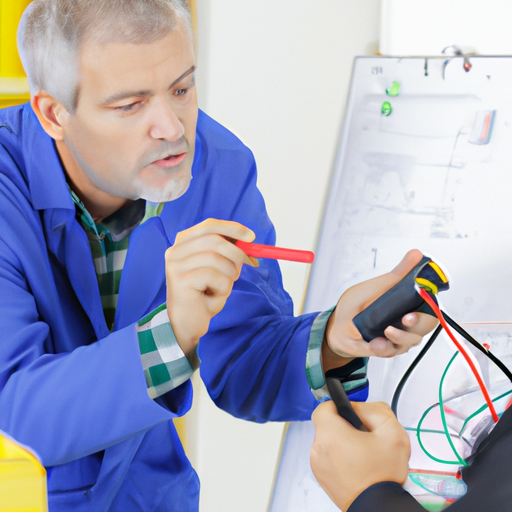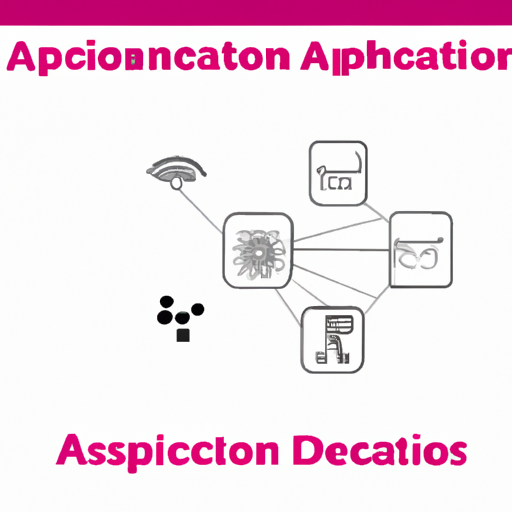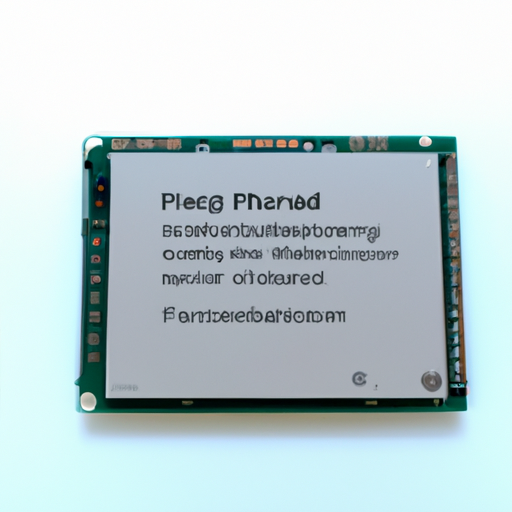Power Capacitor Product Training Precautions
Power Capacitor Product Training Precautions
I. Introduction
Power capacitors are essential components in electrical systems, playing a crucial role in improving power quality and efficiency. As the demand for reliable and efficient electrical systems continues to grow, the importance of proper training in handling power capacitors cannot be overstated. This blog post aims to provide a comprehensive overview of power capacitors, the necessary safety precautions, training requirements, installation guidelines, maintenance practices, and environmental considerations. By understanding these aspects, professionals can ensure safe and effective use of power capacitors in various applications.
II. Understanding Power Capacitors
A. What are Power Capacitors?
Power capacitors are devices that store electrical energy in an electric field, allowing them to release this energy when needed. They are widely used in electrical systems for various purposes, including power factor correction, voltage regulation, and energy storage.
1. Types of Power Capacitors
Fixed Capacitors: These capacitors have a predetermined capacitance value and are typically used in applications where the capacitance does not need to be adjusted.
Variable Capacitors: These allow for adjustable capacitance, making them suitable for applications requiring fine-tuning of capacitance values.
Power Factor Correction Capacitors: These are specifically designed to improve the power factor of electrical systems, reducing energy losses and enhancing system efficiency.
2. Applications of Power Capacitors
Power capacitors find applications in various sectors, including industrial, commercial, and residential settings. They are commonly used in motor starting, voltage stabilization, and reactive power compensation, contributing to the overall efficiency of electrical systems.
B. Basic Principles of Operation
1. Capacitance and Electrical Charge
Capacitance is the ability of a capacitor to store electrical charge. It is measured in farads (F) and is determined by the physical characteristics of the capacitor, including the surface area of the plates, the distance between them, and the dielectric material used.
2. Role in Electrical Systems
Power capacitors play a vital role in electrical systems by providing reactive power, which is essential for the operation of inductive loads such as motors and transformers. By supplying reactive power, capacitors help maintain voltage levels and improve overall system stability.
III. Safety Precautions
A. General Safety Guidelines
Safety is paramount when working with power capacitors. Adhering to general safety guidelines can significantly reduce the risk of accidents.
1. Personal Protective Equipment (PPE)
Always wear appropriate PPE, including insulated gloves, safety goggles, and flame-resistant clothing, to protect against electrical hazards.
2. Electrical Safety Protocols
Follow established electrical safety protocols, such as de-energizing equipment before working on it and using lockout/tagout procedures to prevent accidental re-energization.
B. Handling and Storage
Proper handling and storage of power capacitors are crucial to prevent damage and ensure safety.
1. Proper Handling Techniques
When handling capacitors, avoid dropping or subjecting them to mechanical stress. Use appropriate lifting techniques and tools to prevent injury.
2. Storage Conditions
Store capacitors in a cool, dry place away from direct sunlight and moisture. Ensure that they are stored in their original packaging or in a manner that prevents physical damage.
C. Risk of Electric Shock
Understanding the risks associated with electric shock is essential for safe practices.
1. Understanding Voltage Levels
Power capacitors can operate at high voltage levels, which pose a significant risk of electric shock. Always be aware of the voltage ratings of the capacitors you are working with.
2. Safe Discharge Procedures
Before handling or servicing capacitors, ensure they are properly discharged. Use appropriate discharge tools and follow established procedures to safely release stored energy.
IV. Training Requirements
A. Target Audience for Training
Training on power capacitors is essential for various professionals in the electrical field.
1. Engineers and Technicians
Engineers and technicians involved in the design, installation, and maintenance of electrical systems must have a thorough understanding of power capacitors.
2. Maintenance Personnel
Maintenance personnel should be trained to identify issues, perform regular inspections, and ensure the safe operation of power capacitors.
B. Essential Training Components
Effective training should encompass both theoretical knowledge and practical skills.
1. Theoretical Knowledge
Participants should learn about the principles of capacitance, types of capacitors, and their applications in electrical systems.
2. Practical Skills
Hands-on training should include safe handling, installation procedures, and troubleshooting techniques.
C. Certification and Compliance
1. Industry Standards
Training programs should align with industry standards and best practices to ensure compliance and safety.
2. Importance of Certification
Certification demonstrates a professional's competence in handling power capacitors and enhances their credibility in the field.
V. Installation Precautions
A. Site Assessment
Before installation, a thorough site assessment is essential.
1. Environmental Considerations
Evaluate environmental factors such as temperature, humidity, and potential exposure to corrosive substances that may affect capacitor performance.
2. Electrical System Compatibility
Ensure that the electrical system is compatible with the selected power capacitors to avoid operational issues.
B. Installation Procedures
Following proper installation procedures is critical for the safe and effective operation of power capacitors.
1. Step-by-Step Installation Guide
1. **Preparation**: Gather all necessary tools and materials.
2. **Mounting**: Securely mount the capacitor in the designated location.
3. **Wiring**: Connect the capacitor according to the manufacturer's specifications.
4. **Testing**: Conduct initial tests to ensure proper installation.
2. Common Mistakes to Avoid
Avoid common mistakes such as improper wiring, inadequate grounding, and neglecting to follow manufacturer guidelines.
C. Testing and Commissioning
1. Pre-Commissioning Checks
Perform thorough pre-commissioning checks to verify that all connections are secure and that the system is ready for operation.
2. Post-Installation Testing
Conduct post-installation testing to ensure that the capacitor is functioning correctly and that voltage levels are within acceptable ranges.
VI. Maintenance and Troubleshooting
A. Regular Maintenance Practices
Regular maintenance is essential for the longevity and reliability of power capacitors.
1. Inspection Schedules
Establish a routine inspection schedule to identify potential issues before they escalate.
2. Cleaning and Upkeep
Keep capacitors clean and free from dust and debris to ensure optimal performance.
B. Identifying Common Issues
1. Symptoms of Failure
Be aware of common symptoms of capacitor failure, such as unusual noises, overheating, or visible damage.
2. Diagnostic Techniques
Use diagnostic techniques such as voltage testing and capacitance measurement to identify issues.
C. Repair and Replacement Guidelines
1. When to Repair vs. Replace
Determine whether a capacitor can be repaired or if it is more cost-effective to replace it based on the extent of the damage.
2. Safe Repair Practices
Follow safe repair practices, including proper discharge procedures and the use of appropriate tools.
VII. Environmental Considerations
A. Disposal of Power Capacitors
Proper disposal of power capacitors is essential to minimize environmental impact.
1. Environmental Regulations
Familiarize yourself with local environmental regulations regarding the disposal of electrical components.
2. Recycling Options
Explore recycling options for power capacitors to reduce waste and promote sustainability.
B. Impact on Energy Efficiency
1. Role in Reducing Energy Loss
Power capacitors play a significant role in reducing energy loss in electrical systems, contributing to overall energy efficiency.
2. Contribution to Sustainable Practices
By improving power factor and reducing energy consumption, power capacitors support sustainable practices in various industries.
VIII. Conclusion
In conclusion, understanding power capacitors and adhering to proper training precautions is essential for ensuring safety and efficiency in electrical systems. By following the guidelines outlined in this blog post, professionals can enhance their knowledge and skills, contributing to safer and more effective use of power capacitors. Ongoing education and training are vital in this ever-evolving field, and a commitment to safe practices will benefit both individuals and organizations.
IX. References
- Industry Standards and Guidelines
- Recommended Reading and Resources
- Contact Information for Further Training
By prioritizing safety and education, we can harness the full potential of power capacitors while minimizing risks and promoting sustainable practices in the electrical industry.
Power Capacitor Product Training Precautions
I. Introduction
Power capacitors are essential components in electrical systems, playing a crucial role in improving power quality and efficiency. As the demand for reliable and efficient electrical systems continues to grow, the importance of proper training in handling power capacitors cannot be overstated. This blog post aims to provide a comprehensive overview of power capacitors, the necessary safety precautions, training requirements, installation guidelines, maintenance practices, and environmental considerations. By understanding these aspects, professionals can ensure safe and effective use of power capacitors in various applications.
II. Understanding Power Capacitors
A. What are Power Capacitors?
Power capacitors are devices that store electrical energy in an electric field, allowing them to release this energy when needed. They are widely used in electrical systems for various purposes, including power factor correction, voltage regulation, and energy storage.
1. Types of Power Capacitors
Fixed Capacitors: These capacitors have a predetermined capacitance value and are typically used in applications where the capacitance does not need to be adjusted.
Variable Capacitors: These allow for adjustable capacitance, making them suitable for applications requiring fine-tuning of capacitance values.
Power Factor Correction Capacitors: These are specifically designed to improve the power factor of electrical systems, reducing energy losses and enhancing system efficiency.
2. Applications of Power Capacitors
Power capacitors find applications in various sectors, including industrial, commercial, and residential settings. They are commonly used in motor starting, voltage stabilization, and reactive power compensation, contributing to the overall efficiency of electrical systems.
B. Basic Principles of Operation
1. Capacitance and Electrical Charge
Capacitance is the ability of a capacitor to store electrical charge. It is measured in farads (F) and is determined by the physical characteristics of the capacitor, including the surface area of the plates, the distance between them, and the dielectric material used.
2. Role in Electrical Systems
Power capacitors play a vital role in electrical systems by providing reactive power, which is essential for the operation of inductive loads such as motors and transformers. By supplying reactive power, capacitors help maintain voltage levels and improve overall system stability.
III. Safety Precautions
A. General Safety Guidelines
Safety is paramount when working with power capacitors. Adhering to general safety guidelines can significantly reduce the risk of accidents.
1. Personal Protective Equipment (PPE)
Always wear appropriate PPE, including insulated gloves, safety goggles, and flame-resistant clothing, to protect against electrical hazards.
2. Electrical Safety Protocols
Follow established electrical safety protocols, such as de-energizing equipment before working on it and using lockout/tagout procedures to prevent accidental re-energization.
B. Handling and Storage
Proper handling and storage of power capacitors are crucial to prevent damage and ensure safety.
1. Proper Handling Techniques
When handling capacitors, avoid dropping or subjecting them to mechanical stress. Use appropriate lifting techniques and tools to prevent injury.
2. Storage Conditions
Store capacitors in a cool, dry place away from direct sunlight and moisture. Ensure that they are stored in their original packaging or in a manner that prevents physical damage.
C. Risk of Electric Shock
Understanding the risks associated with electric shock is essential for safe practices.
1. Understanding Voltage Levels
Power capacitors can operate at high voltage levels, which pose a significant risk of electric shock. Always be aware of the voltage ratings of the capacitors you are working with.
2. Safe Discharge Procedures
Before handling or servicing capacitors, ensure they are properly discharged. Use appropriate discharge tools and follow established procedures to safely release stored energy.
IV. Training Requirements
A. Target Audience for Training
Training on power capacitors is essential for various professionals in the electrical field.
1. Engineers and Technicians
Engineers and technicians involved in the design, installation, and maintenance of electrical systems must have a thorough understanding of power capacitors.
2. Maintenance Personnel
Maintenance personnel should be trained to identify issues, perform regular inspections, and ensure the safe operation of power capacitors.
B. Essential Training Components
Effective training should encompass both theoretical knowledge and practical skills.
1. Theoretical Knowledge
Participants should learn about the principles of capacitance, types of capacitors, and their applications in electrical systems.
2. Practical Skills
Hands-on training should include safe handling, installation procedures, and troubleshooting techniques.
C. Certification and Compliance
1. Industry Standards
Training programs should align with industry standards and best practices to ensure compliance and safety.
2. Importance of Certification
Certification demonstrates a professional's competence in handling power capacitors and enhances their credibility in the field.
V. Installation Precautions
A. Site Assessment
Before installation, a thorough site assessment is essential.
1. Environmental Considerations
Evaluate environmental factors such as temperature, humidity, and potential exposure to corrosive substances that may affect capacitor performance.
2. Electrical System Compatibility
Ensure that the electrical system is compatible with the selected power capacitors to avoid operational issues.
B. Installation Procedures
Following proper installation procedures is critical for the safe and effective operation of power capacitors.
1. Step-by-Step Installation Guide
1. **Preparation**: Gather all necessary tools and materials.
2. **Mounting**: Securely mount the capacitor in the designated location.
3. **Wiring**: Connect the capacitor according to the manufacturer's specifications.
4. **Testing**: Conduct initial tests to ensure proper installation.
2. Common Mistakes to Avoid
Avoid common mistakes such as improper wiring, inadequate grounding, and neglecting to follow manufacturer guidelines.
C. Testing and Commissioning
1. Pre-Commissioning Checks
Perform thorough pre-commissioning checks to verify that all connections are secure and that the system is ready for operation.
2. Post-Installation Testing
Conduct post-installation testing to ensure that the capacitor is functioning correctly and that voltage levels are within acceptable ranges.
VI. Maintenance and Troubleshooting
A. Regular Maintenance Practices
Regular maintenance is essential for the longevity and reliability of power capacitors.
1. Inspection Schedules
Establish a routine inspection schedule to identify potential issues before they escalate.
2. Cleaning and Upkeep
Keep capacitors clean and free from dust and debris to ensure optimal performance.
B. Identifying Common Issues
1. Symptoms of Failure
Be aware of common symptoms of capacitor failure, such as unusual noises, overheating, or visible damage.
2. Diagnostic Techniques
Use diagnostic techniques such as voltage testing and capacitance measurement to identify issues.
C. Repair and Replacement Guidelines
1. When to Repair vs. Replace
Determine whether a capacitor can be repaired or if it is more cost-effective to replace it based on the extent of the damage.
2. Safe Repair Practices
Follow safe repair practices, including proper discharge procedures and the use of appropriate tools.
VII. Environmental Considerations
A. Disposal of Power Capacitors
Proper disposal of power capacitors is essential to minimize environmental impact.
1. Environmental Regulations
Familiarize yourself with local environmental regulations regarding the disposal of electrical components.
2. Recycling Options
Explore recycling options for power capacitors to reduce waste and promote sustainability.
B. Impact on Energy Efficiency
1. Role in Reducing Energy Loss
Power capacitors play a significant role in reducing energy loss in electrical systems, contributing to overall energy efficiency.
2. Contribution to Sustainable Practices
By improving power factor and reducing energy consumption, power capacitors support sustainable practices in various industries.
VIII. Conclusion
In conclusion, understanding power capacitors and adhering to proper training precautions is essential for ensuring safety and efficiency in electrical systems. By following the guidelines outlined in this blog post, professionals can enhance their knowledge and skills, contributing to safer and more effective use of power capacitors. Ongoing education and training are vital in this ever-evolving field, and a commitment to safe practices will benefit both individuals and organizations.
IX. References
- Industry Standards and Guidelines
- Recommended Reading and Resources
- Contact Information for Further Training
By prioritizing safety and education, we can harness the full potential of power capacitors while minimizing risks and promoting sustainable practices in the electrical industry.







